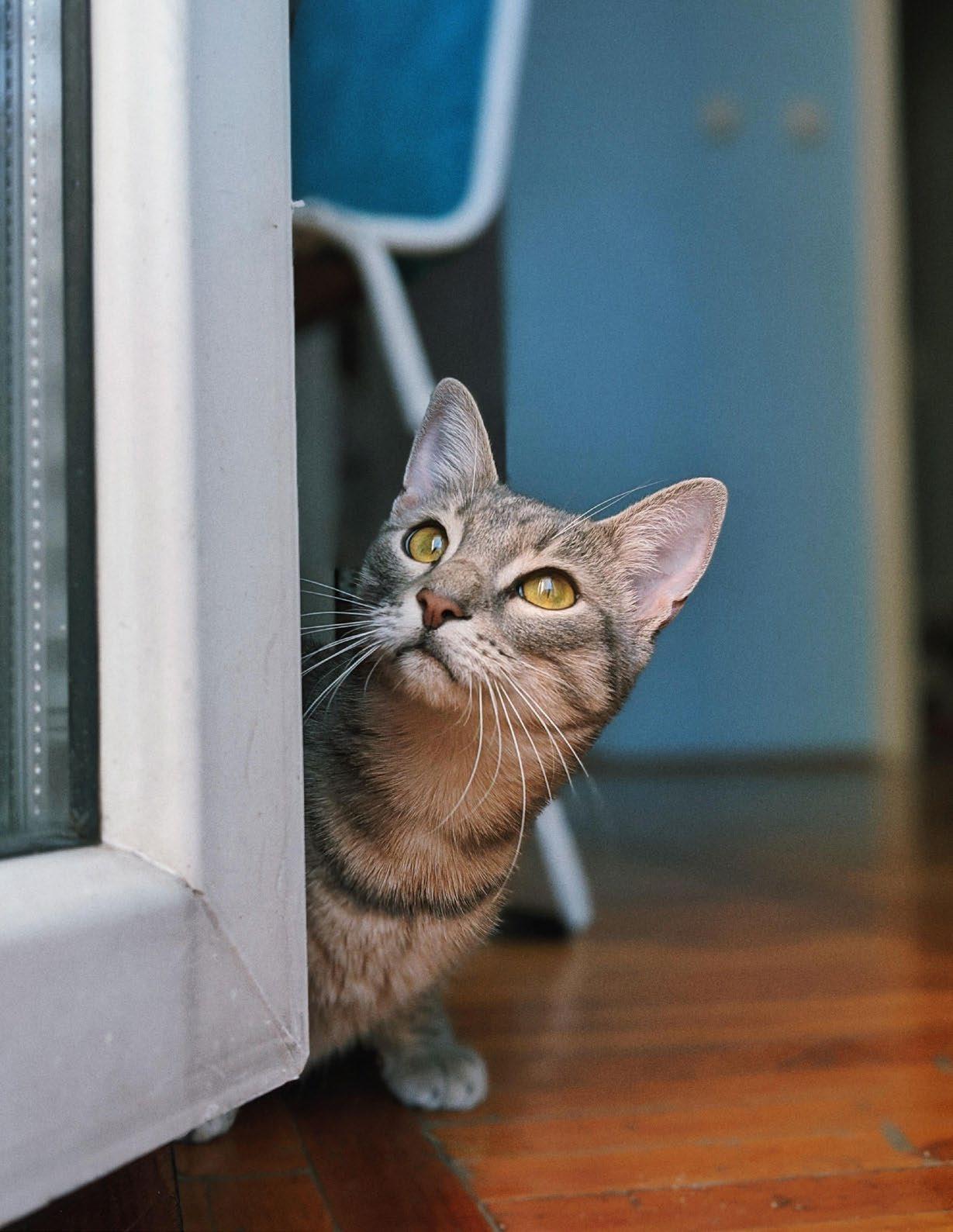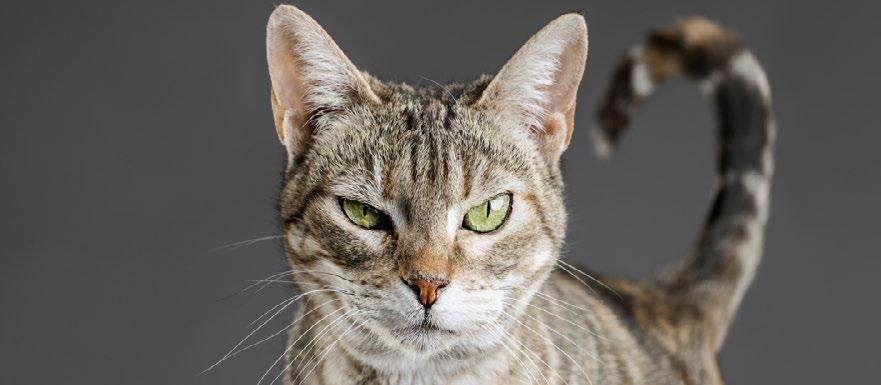
3 minute read
THE CURIOUS CHARACTER OF CATS
– AND ARE THEY REALLY MORE ALOOF?
JENNA KIDDIE
Advertisement
TO SOME people, cats are the perfect pet. Intelligent, elegant, calming companions, capable of dealing with their own exercise and cleaning. To others, they are frustratingly independent, cool and aloof. So what is the true nature of the domestic cat?
The cats many of us choose to share our homes with did indeed evolve from a solitary species, the African wildcat (Felis silvestris lybica). But feral domestic cats can form colonies, based on friendly and reciprocal relationships when resources are plentiful. This capacity to live in social groups has been exploited by humans for thousands of years.
Before realising their value as animal companions, communities initially took advantage of the cat’s prowess as predators of vermin species to safeguard crops. Cats are now one of the most popular companion animal species in the world. So cats clearly share some characteristics with other pet species to make them such a popular addition to the home. They are able to satisfy people’s need for a human-animal bond, providing owners with social and emotional support. And the fact that cats often engage in undesirable behaviours (from an owner’s perspective) such as hunting, means that that bond must have the capacity to be very strong.

Cats have not been as commonly studied as dogs when it comes to social behaviour and people.
Nevertheless, studies have shown cats form affectionate bonds with owners, although there is still debate as to whether this is actually a preference for a person who provides safety and security.
Although cats are known to show a preference for interacting with their owners over strangers, the social behaviour of cats can vary. The quality of human-to-cat interactions can also be influenced by the owners’ gender, age and how much time they have available. Cats appear to have the best relationship with adult women. Interactions initiated by the cat tend to be longer than those initiated by the human. The cat’s sociability towards humans therefore ranges from “very independent” to “very attached”. Where an individual cat lies on this spectrum is likely to be related to genes and previous learning experiences – that familiar mixture of nature and nurture. For example, feral kittens which have positive experiences with several different people in their early developmental stage (before 6 or 7 weeks of age) are more likely to respond well to handling and become satisfying “good” pets than feral kittens which are first handled after the end of this period.
Breed may also influence how friendly cats are to people. Owners of Siamese and Persians report higher levels of affection than owners of non-pedigree cats, for example. Recent research has attempted to further investigate cat sociability by comparing their preferences for interacting with people to their preferences for food, toys and scents. The authors found similar numbers of cats that preferred human interaction to those who preferred food. Significantly lower numbers of cats preferred toys and scents. The preference of some cats for playing or petting interactions with people over food is contrary to the age-old belief that people are just cats’ servants, who only tolerate people because they provide food. This view is also disputed by findings that providing food in the absence of other social interactions from the human carer, such as speaking or stroking, cannot maintain a social bond.
So, are domestic cats aloof? There is no easy answer to this. Cats have the capacity to be very affectionate towards their owners and form significant bonds. But this largely depends on their genetic predispositions and early life experiences. Owner demographics and cat–directed behaviour will also influence the quality of cat-owner interactions. The degree of aloofness in the domestic cat is likely to be very individual. Potential owners should get to know a cat well before taking it into their home as a companion and respecting the cat’s choice to interact. – The Conversation








